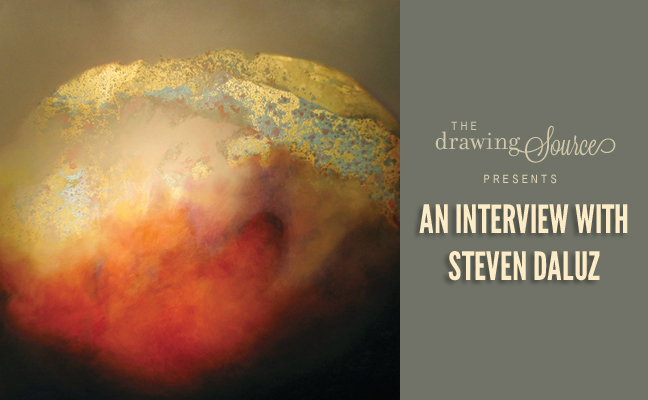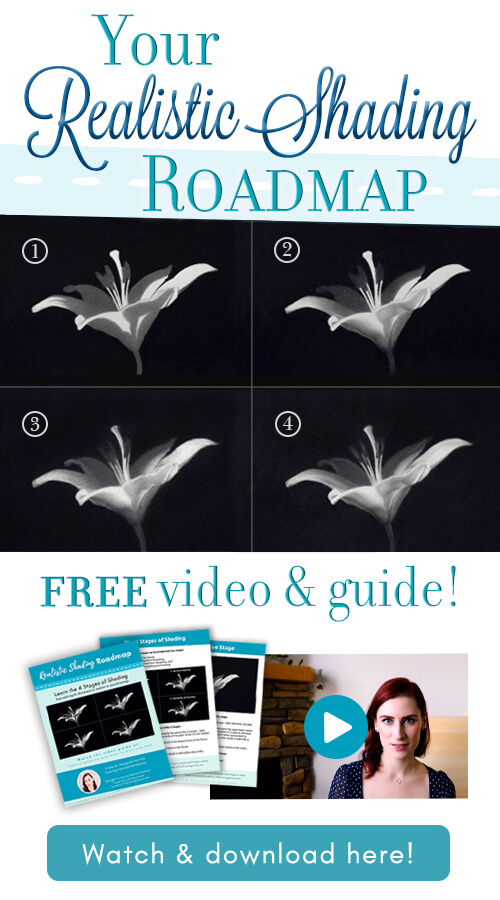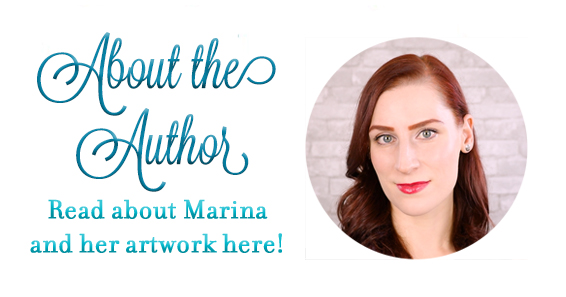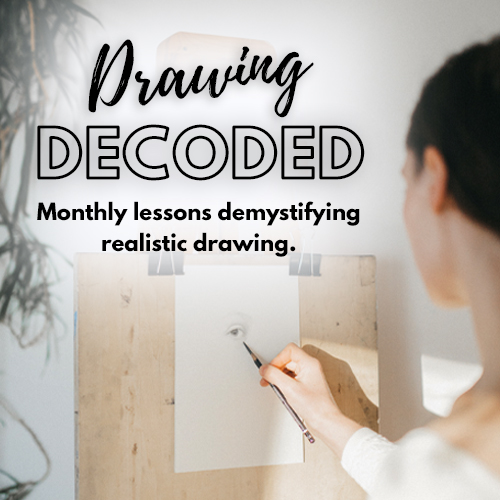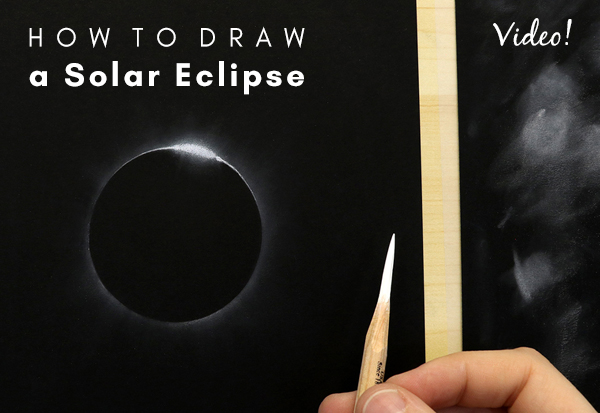- Home
- Drawing Tutorials
- Steven Daluz
An Interview with Steven DaLuz
An Interview with Steven DaLuz
Marina Fridman: Can you talk about your painting process, and some of the materials you like to work with?
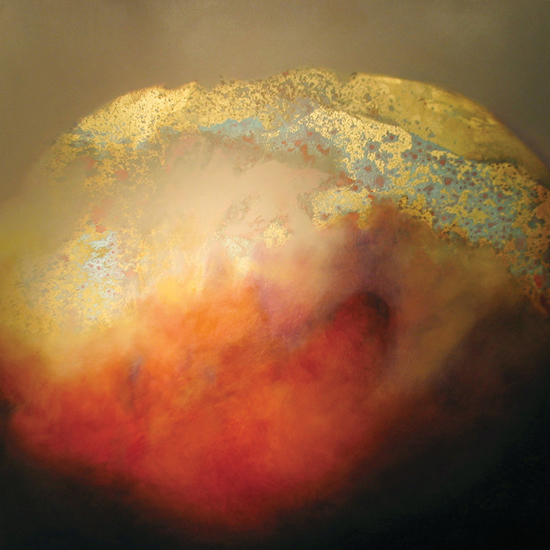 "Ovum" by Steven DaLuz
"Ovum" by Steven DaLuzSteven DaLuz: I developed a process using composition gold leaf, copper leaf, chemically-induced patinas, oil and other mixed media.
As light passes through the glazes of oil, it bounces off the underlying metal leaf, creating a glow that sometimes appears to come from within the painting.
At first glance, the paintings look normal. The light bouncing off the figures, piercing the hazy atmosphere, and appearing as cloud formations are actually gold leaf or copper leaf peeking through the paint.
The imagery for those works is manufactured in my imagination.
I use models for the figurative work; working from a combination of live drawings, sketches and photo reference. The backgrounds are usually imagined spaces.
When I work in oils, I typically use metal leaf selectively in the substrate. I prefer to work on hardboard panel, cradled with poplar. I prepare the panel with 2 coats of PVA (which is somewhat like a synthetic rabbit skin glue); 3 coats of gesso, and 2 diluted coats of red oxide acrylic (usually). Over the past couple of years, however, I have been working mostly on DiBond aluminum panels.
I use gold leaf sizing , and Nazionale composition gold leaf ... though I also use copper leaf and 23K gold leaf. I sometimes use a chemical concoction to induce patinas, a sealant, and then I can begin painting with oils. It typically takes about a week to prepare my surfaces. I have used many different mediums, but honestly, I prefer Liquin for most of the work I do in this manner.
Concerning
paints, I primarily use Rembrandt oil colors, though I also use the 150ml tubes
made by Gamblin. I am not a
purist. I freely admit to using a variety of other handmade paints.
I have a large assortment of brushes in most sizes ... mostly flats and
filberts. Most of them by the
Rosemary Brush Company. I rarely
use rounds at all. I also like to work with encaustic (beeswax, resin,
and pigment) from time to time ... and I still love drawing and works on paper as
well. I frequently experiment with new
materials for mixed media works.
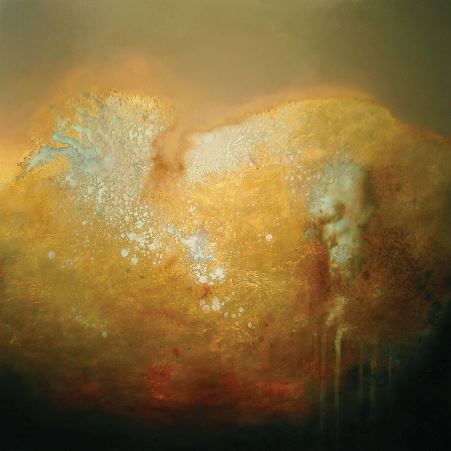 "Opus 110" by Steven DaLuz
"Opus 110" by Steven DaLuz
Marina Fridman: How have you approached finding your unique voice in your artwork?
Steven DaLuz: I don't believe this was ever a conscious decision. I believe it is a lifelong journey. All of my life, I have looked at a lot of art -- in galleries, books, magazines, videos, online -- wherever I could find it. It really was not until after art school that I think I began to discover my "voice".
After attending hundreds of contemporary art openings, I knew almost immediately that I did not want to create "conceptual art". It is fine for some people, but it did not connect with me in any meaningful way. If there was no aesthetic that pulled me into the work, no amount of words used to explain what I was looking at mattered at all. I simply no longer cared. This actually liberated me. I realized there were MANY possible trajectories an artist could take.
I began to think about the works I had seen that moved me -- works that captured my imagination. What was I passionate about? As I thought about this, I realized I was enthralled with works that dealt with the 19th century notion of the Sublime, with Romanticism, and even imaginative realism.
I was especially
interested in conveying simple subjects that tapped into a kind of spiritual
sphere ... something beyond the corporeal, physical reality, but still firmly
connected to it. With that basic framework, I began to investigate material
properties that would help me explore those things with paint and mixed mediums.
It was important to me that I acknowledge the influences that affected me, but
create in a manner that was my own.
"It was important to me that I acknowledge the influences that affected me,
but create in a manner that was my own."
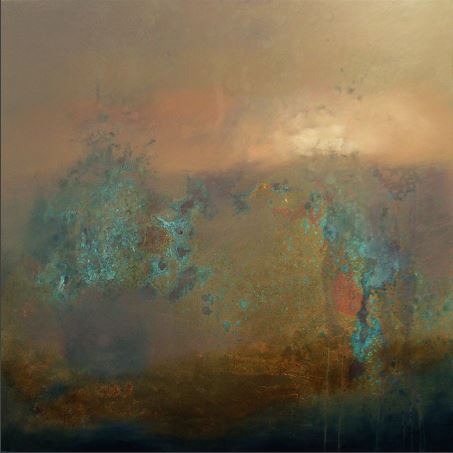 "Opus" by Steven DaLuz
"Opus" by Steven DaLuzUltimately, I think there is no substitute for time spent in the studio working. That is the "sanctuary" -- the place where the discovery really happens.
Over the months, experimenting with materials, I began to experience the joy of finding processes that best helped me to convey my ideas without words.
I wanted my work to evoke "feelings" within others; knowing full well that it would not connect with everyone. I enjoy intellectual stimulation, but I am more concerned with sparking the imagination. Somewhere in the process, I think I began to discover my "voice".
That said, I am also a believer in moving onto other manners of working. We should allow ourselves to be free to explore and create however we see fit. Do not feel you must be shackled to a process.
Marina Fridman: How has your work transformed over time, and how are you noticing it evolve these days?
Steven DaLuz: I think my work is constantly evolving -- often, without conscious motivation. However, I think this is probably true of most artists. When we exhaust an idea or concept, it is usually best to move on. There are endless possibilities and opportunities to engage our imaginations.
Over time, I think I became more interested in properties of ethereal light, mystery, and the sublime. Weaving images of light, calm, and serenity against darkness, chaos, and tumult really tapped into something that captivated me. It's a kind of metaphor for this journey through life.
More recently, I think spirituality has crept into my work. I think humanity has a kind of subconscious yearning for something more than ourselves -- something beyond this plane of existence. Well, I do at least. I do not fight those urges, and I suspect they will occupy my attention for many years to come.
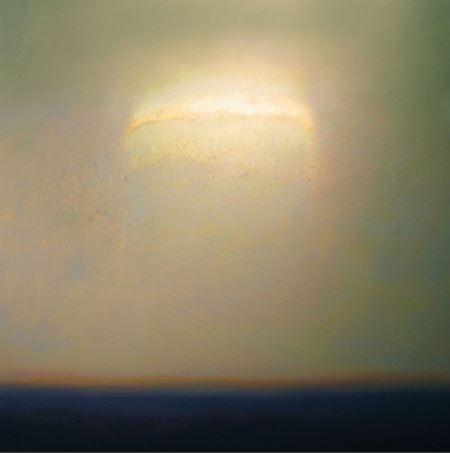 "Source" by Steven DaLuz
"Source" by Steven DaLuz
Marina Fridman: In your essay on the Importance of the Sublime in Today's Painting, you mention Barnett Newman's view that figuration interferes with our ability to perceive the absolute, and that the unbound mind cannot be represented by an object. Do you agree, and is this what draws you to abstraction?
Steven DaLuz: Actually, I disagree with Newman. I do not think that figuration need tether the mind at all, unless we allow it to do so. It is true that, as human beings, we are encased in our physical bodies. As such, we relate to the figure intimately.
However, I believe that mind and body are inextricably connected. Further, our entire substance is inseparable from the tapestry of the universe. The cosmos offers great depths of mystery ... yet, we are all a PART of it. The depiction of the figure is, in itself, a kind of "abstraction".
After all, in the end, what we look at when we gaze upon a painting or drawing, is merely paint, marks made with graphite or some other material upon a surface, knitted together to visually stimulate our minds into making sense of what we are seeing. So, whether the work is figuration, or abstracted shapes...they all have the capacity to take the viewer somewhere. Some people will connect with it. Some will not. We must learn to accept that reality, and create work we are passionate about.
"Some people will connect with
it. Some will not.
We must learn to accept that reality,
and create work we are passionate about."
Marina Fridman: What is the relationship between your figurative and abstract works?
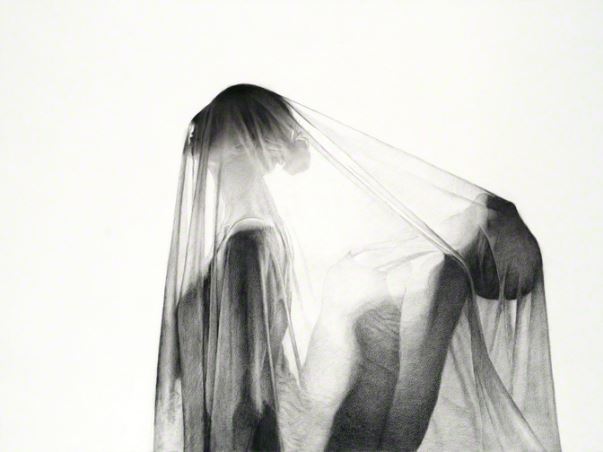 "Passenger" by Steven DaLuz
"Passenger" by Steven DaLuzSteven DaLuz: When I work on figurative pieces, I spend a good amount of time engaged in intense observation ... sometimes over an extended period. While that carries with it many aspects that stimulate me, eventually it can become exhausting.
So, after 6 months or so of focusing on figurative works, I embrace the chance to work entirely from my imagination, without concerning myself with the focused observation that figurative works require.
In some respects, it is liberating. Whether figurative or not, the common thread that runs through most of my work is my desire to conjure up a sense of mystery and ethereal light. Additionally, both bodies of work usually contain some unconscious "spiritual" component to them. A solitary figure...or an obelisk, each conjure up the notion of a kind of "singularity".
The idea of a state of "one-ness" between humankind and the universe has become something of a fascination for me -- particularly as I have gotten older. But, I hope I do not sound lofty here. I do not try to supply any answers to life's big questions with my work. I merely try to express some of my thoughts and feelings to hopefully spark the imaginations of others ... perhaps to inspire some to ask questions.
In my "imagined landscapes", I try to reveal a glimpse of something that might be ... something that makes my spirit soar. In the process, if I engage a viewer for more than a few moments, I am delighted.
Marina Fridman: What is it about the figure that is significant to you?
Steven DaLuz: I am endlessly fascinated with the figure. We are human beings, after all ... and we intimately relate to the figure, because we all have one. Some, arguably much better than others!
But all majestic and beautiful in their own right. The way light falls upon it. The twists and turns of the body in motion can be mesmerizing. A figure engaged in certain forms of dance exhibits a kind of poetry of the body. The figure "speaks" without words, if we take the time to listen.
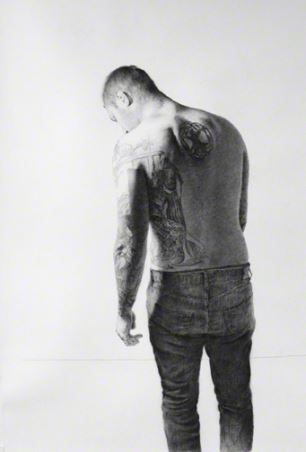 "Searching" by Steven DaLuz
"Searching" by Steven DaLuz
Marina Fridman: Do you notice any major differences in your state of mind when you paint figuratively and abstractly?
Steven DaLuz: Yes. When I work on the figure, whether from life or reference material, I am engaged in more intense observation. However, if I focus on shapes and negative spaces, my state of mind is freed a bit from trying to capture what I am seeing before me. In the imagined works, I am completely liberated from observation, and I get to plumb the depths of my imagination. This can be daunting, but I find it to be a kind of reprieve from the hard work involved with making a decent figurative piece by replicating what I am physically seeing.
Marina Fridman: What artists, either historical or contemporary, have influenced your work?
Steven DaLuz: All of the artists throughout history, whose work I have seen have probably influenced me in some way. Their images have been implanted into my brain, including many who are working today. Honestly, it would be a disservice to try and list them all, as there are so many. I would like to think most of my work comes from countless solitary hours in my studio, experimenting and working out all manner of visual problems.
However, the urge to say "self-taught" would be an arrogant supposition, because I know I have stood on the shoulders of giants who have gone before me. I am reluctant to say "influenced" as much as saying I share a similar sensibility with a number of them. If I had to choose one in particular, with whom I share that sensibility, I'd have to say J.M.W. Turner.
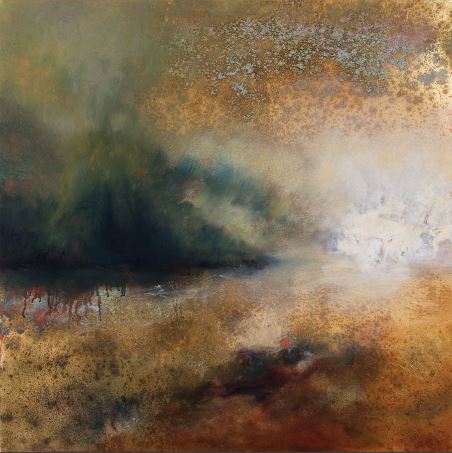 "Tempest (After Turner)" by Steven DaLuz
"Tempest (After Turner)" by Steven DaLuz
Marina Fridman: What is drawing to you, and what role does it play in your work?
Steven DaLuz: I absolutely love to draw. As a kid, I thought everyone did. In fact, I didn't really pick up a paint
brush until I was in my early 40's, after I had done probably many thousands of
drawings. In my figurative paintings,
drawing is essential. It is the
foundational linchpin behind the work.
If the drawing fails, the painting will suffer for it. While to a lesser degree, drawing even plays
a role in my imaginative pieces. I often
rough out a small thumbnail sketch to consider shapes and composition as a kind
of "spring board", before I start painting the surface. Drawing is
the raw reflection of the artist’s hand.
"Drawing is the raw reflection of the artist's hand."
Marina Fridman: Were you ever given a piece of advice about drawing, or art in general, that you will never forget?
Steven DaLuz: Yes. The day you think you have
"arrived" or have created a "masterpiece", you are
done. That has always stuck with
me. Instead, I always strive to make
that next work just a little better than the last one. I do not always succeed, but it does not stop
me from trying to make a better painting next month than I made today. The real reward to art making, in my opinion,
lies in the creative journey itself.
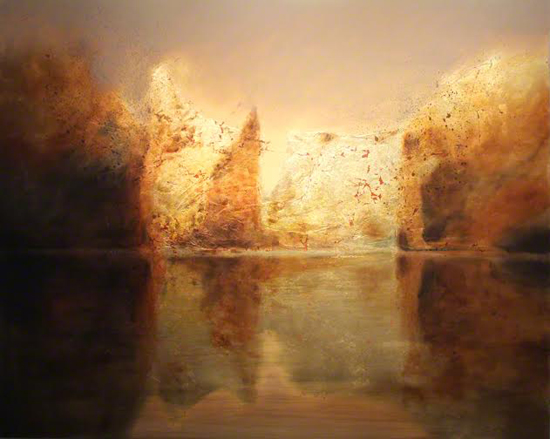 "Siren Song" by Steven DaLuz
"Siren Song" by Steven DaLuz
View more of Steven's work at StevenDaLuz.com
B O N U S: Download this interview!
(Plus, get a weekly newsletter and access to the Members-Only Drawing Resource Library!)

You may also be interested in ...
Return to Drawing Inspiration from An Interview with Steven DaLuz
Return to the Homepage from An Interview with Steven DaLuz
